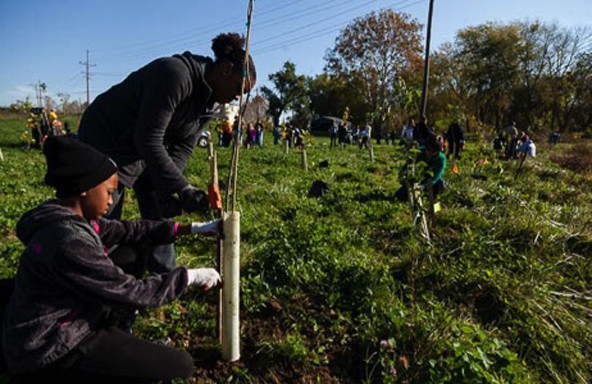I started my investment career in 2009 by scouting the oil and gas industry for profitable opportunities. The department head assigned me to the energy sector, because he considered it the most difficult area in which to make money as a long-term investor. He thought I would learn from the challenge.
He was right. The oil price crashes of 2009 and 2014 have revealed the inherent volatility and unpredictability of energy prices. Of the dozens of oil and gas CEOs and experts I met, not one was able to predict the downturns. Oil, natural gas and coal prices are currently stagnating at less than half their post-2000 peak levels. When energy prices collapse, profitability and investment returns in the energy sector fall off the cliff. Employment follows suit, and almost 200,000 American oil and gas jobs were lost between 2014 and 2016.
But even when energy prices are strong, the cash flows of energy companies are weak. Fossil fuel projects have long development cycles, and it can take a decade to go from borehole to barrel. The decision to drill or mine is usually made in times of optimism, when prices are high, but the outlook often changes completely before production reaches the market.
On March 28, President Donald Trump took a “sledgehammer” to US climate policy, lifting the moratorium on coal and ordering a review of emission standards from fossil fuels. Recently he also signed executive memos to revive the Keystone XL and Dakota Access pipeline projects. These actions match the promises he made during his campaign about “opening federal lands for oil and gas production” and “opening offshore areas.” But this strategy to revive fossil fuels misses a crucial point: We cannot rely on a volatile industry to generate long-term financial returns or employment.
 Coal mine operations in Gillette, Wyoming. (Photo by Greg Goebel)
Coal mine operations in Gillette, Wyoming. (Photo by Greg Goebel)
Are you enjoying this article? Read more like this, plus SSIR's full archive of content, when you subscribe.
Instead, it is far more productive to focus on areas that are stable and growing. Three such sectors have emerged in the US environmental arena: land restoration, renewable energy, and sustainable agriculture. The attractive growth profile of these sectors is starting to catch the interest of investors. Policymakers should also pay heed since these industries are often labor-intensive and create jobs that do not require college degrees. The unemployment rate is twice as high for those without college degrees—who constitute the majority of working-age voters—and these three environmental categories can generate tens of thousands of lasting jobs for this demographic.
Land restoration is the rehabilitation of degraded ecosystems through improving soil health and planting trees and other vegetation. US wetland restoration has grown tenfold since the 1990s and now attracts around $2 billion in private capital every year. In addition to improving water and air quality, research shows that restoration employs 126,000 American workers directly—60 percent more than the coal industry—and supports another 95,000 jobs indirectly. Restoration is also geographically convenient: It is needed heavily in regions where mining has altered the landscape. Laid-off workers in the former coal expanses of Central Appalachia can now rehabilitate the land their past employers degraded.
 Youth planting trees around the Chesapeake Bay. (Photo by chesapeakebay.net)
Youth planting trees around the Chesapeake Bay. (Photo by chesapeakebay.net)
Renewable energy from solar and wind power offers another ray of hope in a time of tepid economic progress for the middle class. American investment in renewable energy grew eightfold from 2004 to 2015. Strong growth is here to stay, as shown by soaring installations of solar panels even after oil became cheap in the commodity crash of 2014. With the costs of renewable energy falling rapidly, demand will continue to climb. In Texas—historically the country’s oil hub—wind power is often cheaper than fossil fuels. Wind energy supports 25,000 jobs in Texas, softening the blow from the 99,000 oil-related jobs the state lost in the last two years. Nationwide, employment in solar energy expanded 12 times faster than overall job creation in the United States, exceeding employment in oil and gas extraction for the first time.
Innovations in American agriculture, such as vertical farming and plant-based “meat,” create prosperity by enabling the United States to produce more food with less land and water. Investors smell opportunity here, and valuations for pioneering food startups have soared. The shift toward more sustainable diets is nothing new; for many years, organic fare has grown at double-digit rates in a broader food industry that’s growing only 3 percent a year. This is good news for the economy, because employment in traditional agriculture is expected to fall, in part because the average farmer in the United States is on the brink of retirement. Sustainable and innovative agriculture can turn this trend around since it is more labor-intensive than industrial farming, and it’s attracting young Americans—the cohort with the highest unemployment rates since 2000—into the space.
These three sectors of the environment—land restoration, clean energy, and sustainable agriculture—are growing rapidly and offer valuable near-term opportunities for job creation. And they can deliver long-term financial returns that are attractive in today’s low-growth economy. In contrast, doubling down on the volatile fossil fuels industry would be an expensive gamble that would likely produce low investment returns and few lasting jobs.
Investors have started to shift their focus from fossil fuels to nature since they see where the future opportunity is. Investing in American prosperity through the environment would also be an astute move for the new presidential administration.
Support SSIR’s coverage of cross-sector solutions to global challenges.
Help us further the reach of innovative ideas. Donate today.
Read more stories by Sofia Faruqi.

